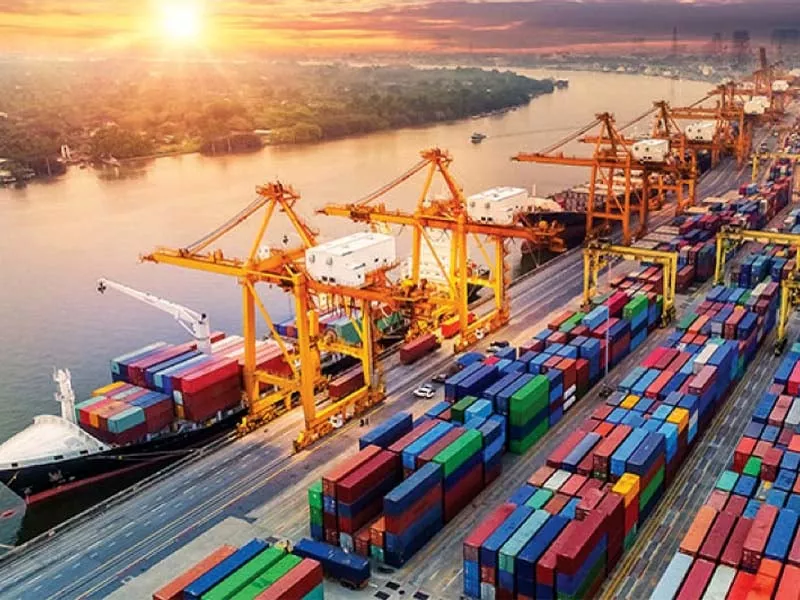Dream of viable economy remains ever elusive
Halfway into its term, PTI’s inability to bring necessary course correction overshadows minor gains in 2020
ISLAMABAD:Between its inability to introduce effective policies and the worldwide outbreak of the novel coronavirus, Pakistan Tehreek-e-Insaf’s promise to put the country on the road to economic viability and social equity remained a distant dream in 2020.
The end of the year marks the completion of nearly half the term of Prime Minister Imran Khan’s first national government, but his grand ambition for Pakistan continues to be elusive.
After refusing to accept of his party’s lack of experience in running the government, Prime Minister Imran Khan eventually conceded in December “there is no excuse for the government for any lack of experience. It is the time to deliver.”

Rhetoric against political foes did consolidate the premier’s support base in the initial months of his tenure, but as observers domestic and foreign pointed out, there is a shelf life for everything.
When he launched PTI’s election manifesto in July 2018, Prime Minister Imran said his party would boost the economy by creating 10 millions jobs and promoting small-to-mid-level industries. "We will make Pakistan business-friendly and turn the China–Pakistan Economic Corridor (CPEC) into a game-changer by enhancing bilateral relations," he promised.
Two and half years down the line, there has been hardly any progress on those fronts and the pace of work during this time suggests there is little chance PTI will deliver before its term in power ends.
Stagnant revenues
“PTI will reform FBR and increase the tax net through a robust tax policy, efficient tax administration structure and effective enforcement mechanism”, stated the party manifesto.
However, tax collection by the Federal Board of Revenue remained almost stagnant during PTI’s tenure. The government ended its second year in power by collecting Rs3.99 trillion against the premier’s promise to double revenue to Rs8 trillion. The government has already conceded that this fiscal year’s target of Rs4.963 trillion is unachievable.
Against the promise of expanding the tax net, only 2.2 million people have so far filed their annual income tax returns in fiscal year 2020-21 against the 6.5 million people who have valid National Tax Numbers.
PTI promised to “champion the shift towards direct taxation as the primary source of tax revenue as opposed to indirect taxes,” as they accounted for a disproportionately high 60 per cent share of the country’s tax revenue. But during its first two-and-a-half years in power, the share of indirect taxes increased by another six per cent.
Where its manifesto announced the party’s intention to “improve audits by establishing risk engines and smart algorithms to identify potential taxpayers for audit,” the PTI government has closed over 310,000 tax audit cases without performing an audit due to lack of human resources.
Against its promise to crack down on corrupt practices that promote tax evasion, not a single officer was taken to task and notorious individuals held on to key positions in field formations with protection from the headquarters.
Prime Minister Imran also changed five FBR chairpersons the first half of his tenure. The federal cabinet, on December 29, appointed Javed Ghani to the position, even though he is set to retire in April. Sources suggested his appointment was made since he chose ‘not to create any hurdles’ for those ‘actually running FBR’.
Waiting on promises
In its manifesto, PTI promised to create 10 million jobs over five years in key sectors like SME, housing, ICT, health, education, green economy and tourism.
However, due to a low economic growth rate of 1.9 per cent in its first year and then a contraction of 0.4 per cent in the second, unemployment actually increased under PTI’s watch.
The government did not make a serious effort to prepare and announce the latest numbers of poverty and unemployment. This was largely because of its inability to strengthen the Pakistan Bureau of Statistics, an organisation that now works under the Ministry of Planning and Development.
Unofficial estimates by independent economists show that millions more lost employment during the PTI tenure.
Where PTI also promised to “play the role of an enabler and facilitator, but not developer, to build five million low cost housing units,” actual efforts to facilitate this goal boiled down to a construction sector tax amnesty scheme that has been availed by less than four hundred, mainly wealthy, individuals.
Another PTI promise in its manifesto was to turn around state-owned enterprises (SOEs) by creating a wealth fund, aggressive depoliticisation and through effective performance management of ‘capable and autonomous leadership’.
The year 2020 saw no progress in that regard and the PTI neither restructured nor privatised a single entity. In the meantime, the power sector circular debt that amounted to Rs1.15 trillion in June 2018 more than doubled to over Rs2.4 trillion.
Meanwhile, development on CPEC projects almost came to a halt and the second phase of the China and Pakistan’s flagship collaboration so no progress in 2020.
A long road ahead
Today, Pakistan needs an annual GDP growth rate of over six per cent for at least two consecutive decades to lower poverty and unemployment. During the third year of the PTI, economic growth rate may remain around 2.5% to 3%.
The COVID-19 outbreak did impact the world and Pakistan’s economy, but during 2020 no efforts were made towards addressing the structural bottlenecks that could help sustain a higher growth rate. While it is easy to blame a debt-financed 5.6% growth rate under PML-N, it is exponentially harder to promote an export-led growth model, say observers.
The inflation rate during 2020 remained closed to double digits, primarily because of administrative and governance failure of the ruling party that first exported sugar and wheat, and then imported it.
No serious efforts were made to ensure fiscal discipline and the budget deficit remained elevated. The federal budget deficit during July-October period of 2020 widened to 2% of the GDP despite scaling back defence and development spending.
Trade balance in 2020 improved largely because of containing imports, as exports remained at negative 7.1% during July-November period, according to the SBP.
Foreign remittances appeared to be the only silver lining in the second half of the 2020, showing over 25% growth. But the questions remain whether the trend will continue due to shrinking job opportunities for Pakistanis in Gulf countries.
Due to better performance of remittances coupled with reduction in imports, the current account posted $1.6 billion surplus in five months of this fiscal year. But although the PTI had promised to break the begging bowl, Prime Minister Imran began his stint with $12.5 billion financial bailout from Saudi Arabia, the United Arab Emirates and Qatar to fill the financing gap left behind by the PML-N government.
During first half of its term, the PTI government did not do anything to reduce reliance on foreign debt. It closed the year 2020 by availing $1 billion debt relief from the G-20 nations, which was technically a default.
Foreign exchange reserves, though, increased to over $13 billion by 2020 but these were as vulnerable as in August 2018. The net international reserves after excluding all liabilities as per the definition of the IMF were still negative.
Investment indicators have worsened further in the second year of the PTI government but savings ratio has improved on the back of improvement in the external account.
The investment-to-gross domestic product (GDP) ratio further deteriorated to 15.4% in the second year of the government. The government missed the investment-to-GDP target for the second successive year. However, savings that stood at 10.8% of GDP in 2018-19 increased to 13.9% – over one-percentage-point higher than the government’s target. The total size of the national economy is now estimated at $265 billion for this fiscal year, down from $279 billion a year ago.
Per capita income further shrank 6.8% to $1,355 in the last fiscal year. It was lower by $100 when compared with the downward-revised per capita income of $1,455 for the 2018-19 year.
Pakistan’s ranking on Human Development Index (HDI) fell two notches and stood at 154th position in 2020 out of total 189 countries. The country’s ranking remained lower than all comparable economies and only Afghanistan fell below than Pakistan and its ranking stood at 169th position.


COMMENTS
Comments are moderated and generally will be posted if they are on-topic and not abusive.
For more information, please see our Comments FAQ